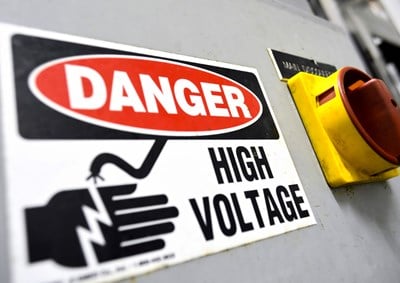Seizures involve sudden involuntary alterations in behavior or consciousness resulting from excessive electrical activity in the brain. Seizures are common in persons who have epilepsy and can last from a few seconds to more than five minutes. In other cases, seizures may be caused by head injuries, brain tumors, lead poisoning, inadequate brain development, genetic deficiencies, infectious disease and fevers. Seizures may also be caused by alcohol abuse and alcoholism, Alzheimer’s Disease, lupus, kidney failure, stroke and other illnesses. In approximately 50 percent of seizures, no cause can be identified.
In the case of most epileptic seizures, it is usually not necessary to call 911 or the local emergency number. However, it is important to keep the person away from harmful objects and to make sure his or her airway remains clear.
The symptoms of a seizure includes:
- A preceding warning or aura (in some cases).
- A complex partial seizure or a convulsion involving rhythmic jerking.
- A loss of responsiveness or alertness, with the eyes generally remaining open.
- Barely detectable breathing during the seizure followed by deep breathing during recovery.
- Incontinence or loss of urine (in some cases).
- A transition back to the person’s normal state known as the “post-ictal period”; this is a recovery period for the brain, which may last anywhere from a few seconds to several hours and may involve combativeness.
In some cases, seizures may also involve isolated abnormal movements of a limb, periods of staring or abnormal stiffening without rhythmic jerking.
Take the following actions if someone is having a seizure:
- Move harmful objects out of the way, cushion the head and protect the person from falling.
- Loosen ties, scarves or other neckwear.
- Do not put anything in the person’s mouth.
- Do not attempt to restrain the convulsions.
- After the convulsion ceases or if the person is vomiting, roll the person onto his or her left side to protect the airway and to help drain away any mouth secretions.
- Make sure the airway is clear and the person is breathing. If not, start rescue breathing and seek immediate medical attention.
- Observe the length of the seizure, the movements involved, direction of head and eye movements and the time it takes to return to full consciousness and alertness, so you can report this information to a medical professional.
Call 911 or the local emergency number immediately if:
- The seizure lasts five minutes or longer or is repeated.
- Injuries have resulted from the seizure.
- The person experiences persistent breathing difficulty.
- The person having the seizure also has a fever.
- The person experiences persistent confusion or remains unconscious.
- The person is pregnant, is a diabetic, is injured or appears to have life-threatening conditions.
- This is the first time the person has had a seizure, or, in the case of an established epileptic, the seizure represents a marked change from the type or duration of seizure typically experienced.
 American College of Emergency Physicians
American College of Emergency Physicians







